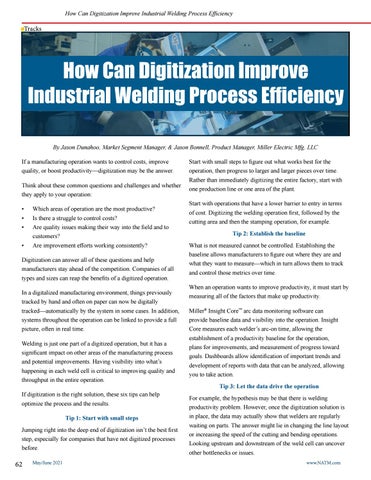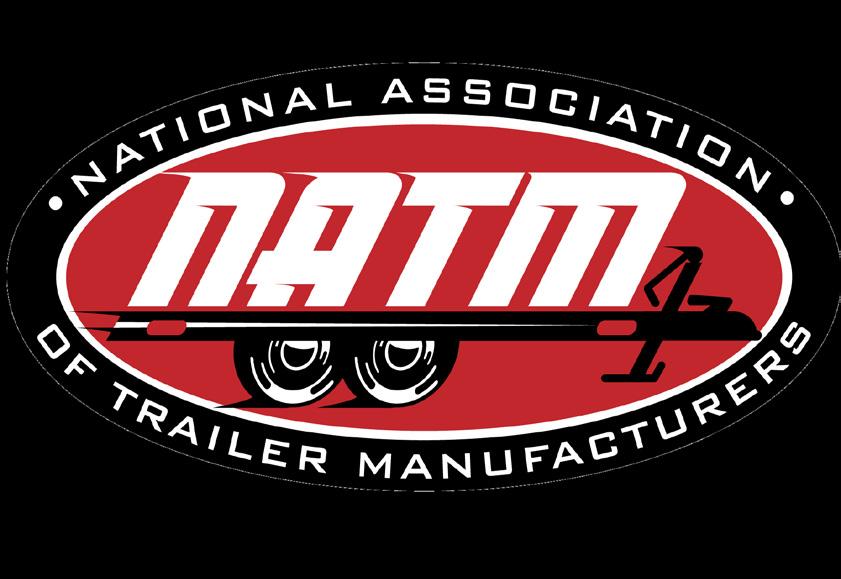How Can Digitization Improve Industrial Welding Process Efficiency
Tracks
How Can Digitization Improve Industrial Welding Process Efficiency By Jason Dunahoo, Market Segment Manager, & Jason Bonnell, Product Manager, Miller Electric Mfg. LLC If a manufacturing operation wants to control costs, improve quality, or boost productivity—digitization may be the answer. Think about these common questions and challenges and whether they apply to your operation: • • • •
Which areas of operation are the most productive? Is there a struggle to control costs? Are quality issues making their way into the field and to customers? Are improvement efforts working consistently?
Digitization can answer all of these questions and help manufacturers stay ahead of the competition. Companies of all types and sizes can reap the benefits of a digitized operation. In a digitalized manufacturing environment, things previously tracked by hand and often on paper can now be digitally tracked—automatically by the system in some cases. In addition, systems throughout the operation can be linked to provide a full picture, often in real time. Welding is just one part of a digitized operation, but it has a significant impact on other areas of the manufacturing process and potential improvements. Having visibility into what’s happening in each weld cell is critical to improving quality and throughput in the entire operation. If digitization is the right solution, these six tips can help optimize the process and the results. Tip 1: Start with small steps Jumping right into the deep end of digitization isn’t the best first step, especially for companies that have not digitized processes before.
62
May/June 2021
Start with small steps to figure out what works best for the operation, then progress to larger and larger pieces over time. Rather than immediately digitizing the entire factory, start with one production line or one area of the plant. Start with operations that have a lower barrier to entry in terms of cost. Digitizing the welding operation first, followed by the cutting area and then the stamping operation, for example. Tip 2: Establish the baseline What is not measured cannot be controlled. Establishing the baseline allows manufacturers to figure out where they are and what they want to measure—which in turn allows them to track and control those metrics over time. When an operation wants to improve productivity, it must start by measuring all of the factors that make up productivity. Miller® Insight Core™ arc data monitoring software can provide baseline data and visibility into the operation. Insight Core measures each welder’s arc-on time, allowing the establishment of a productivity baseline for the operation, plans for improvements, and measurement of progress toward goals. Dashboards allow identification of important trends and development of reports with data that can be analyzed, allowing you to take action. Tip 3: Let the data drive the operation For example, the hypothesis may be that there is welding productivity problem. However, once the digitization solution is in place, the data may actually show that welders are regularly waiting on parts. The answer might lie in changing the line layout or increasing the speed of the cutting and bending operations. Looking upstream and downstream of the weld cell can uncover other bottlenecks or issues. www.NATM.com

































